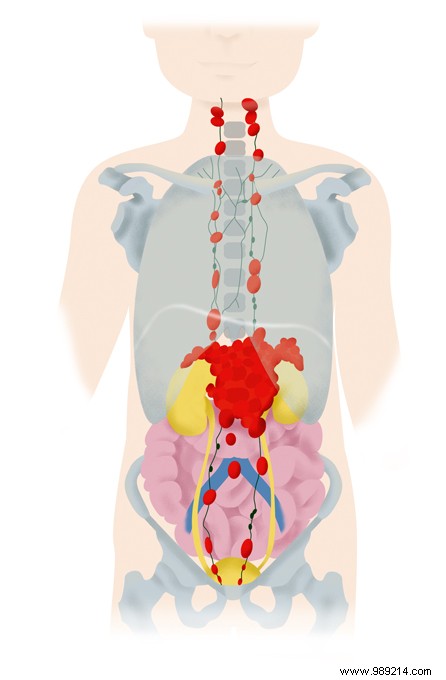Australian researchers announce they have identified a cellular protein playing a leading role in the development of neuroblastoma, one of the most common and dangerous cancers in young children.
Neuroblastoma, which affects the nervous system, is one of the most common malignancies in children. It is characterized by extreme clinical and evolutionary variability, ranging from spontaneous regression without treatment to rapidly fatal progression.
We know that one-third of children with very high levels of MYCN – a transcription factor that increases the expression of several genes involved in the development of neuroblastoma – have a poor prognosis vital. However, so far, MYCN has proven to be an inaccessible target for drug design.
This is why, for several years, researchers have preferred to turn to other molecules evolving in close collaboration with MYCN. As part of a new study, a team from the Children's Cancer Institute in New South Wales (Australia) focused on a cellular protein called ALYREF .
Based on their work, published in Nature Communications , this plays a crucial role in accelerating the effects of MYCN in neuroblastoma. Specifically, ALYREF appears to bind directly to MYCN to activate another protein, USP3, which prevents its breakdown. This process then maintains the extremely high levels of MYCN needed to develop cancer.

The fact that MYCN is so dependent on ALYREF to stimulate cancer cell growth suggests that its inhibition could interrupt this cycle. According to Dr. Glenn Marshall, who co-authored this study, this is a worldwide discovery.
“We were able to show for the first time that ALYREF actually binds and controls MYCN function in neuroblastoma cells” , explains the researcher. "This means we now have a new molecule to target...a new way to get to MYCN to stop it from causing aggressive cancer growth" .
The next step will be to develop a drug capable of inhibiting the actions of ALYREF . “Once we find a suitable drug candidate, we can put it into a clinical trial in children with high levels of MYCN and ALYREF in their tumors” , conclude the authors.
Interestingly, targeting ALYREF may also prove useful for other types of cancer which, such as high-risk neuroblastoma, are induced by MYCN. These include blood cancer, glioblastoma, retinoblastoma or neuroendocrine prostate cancer.